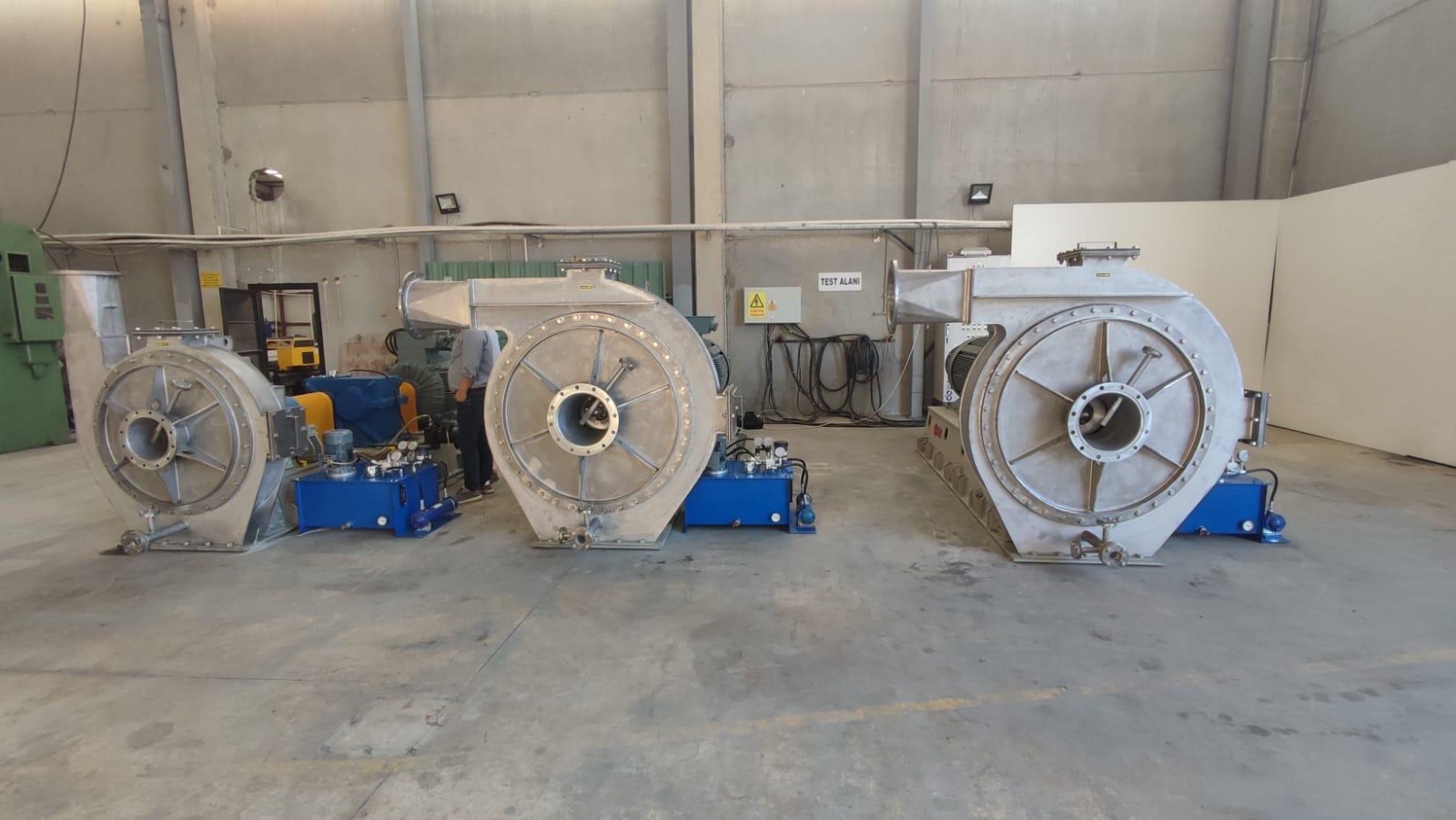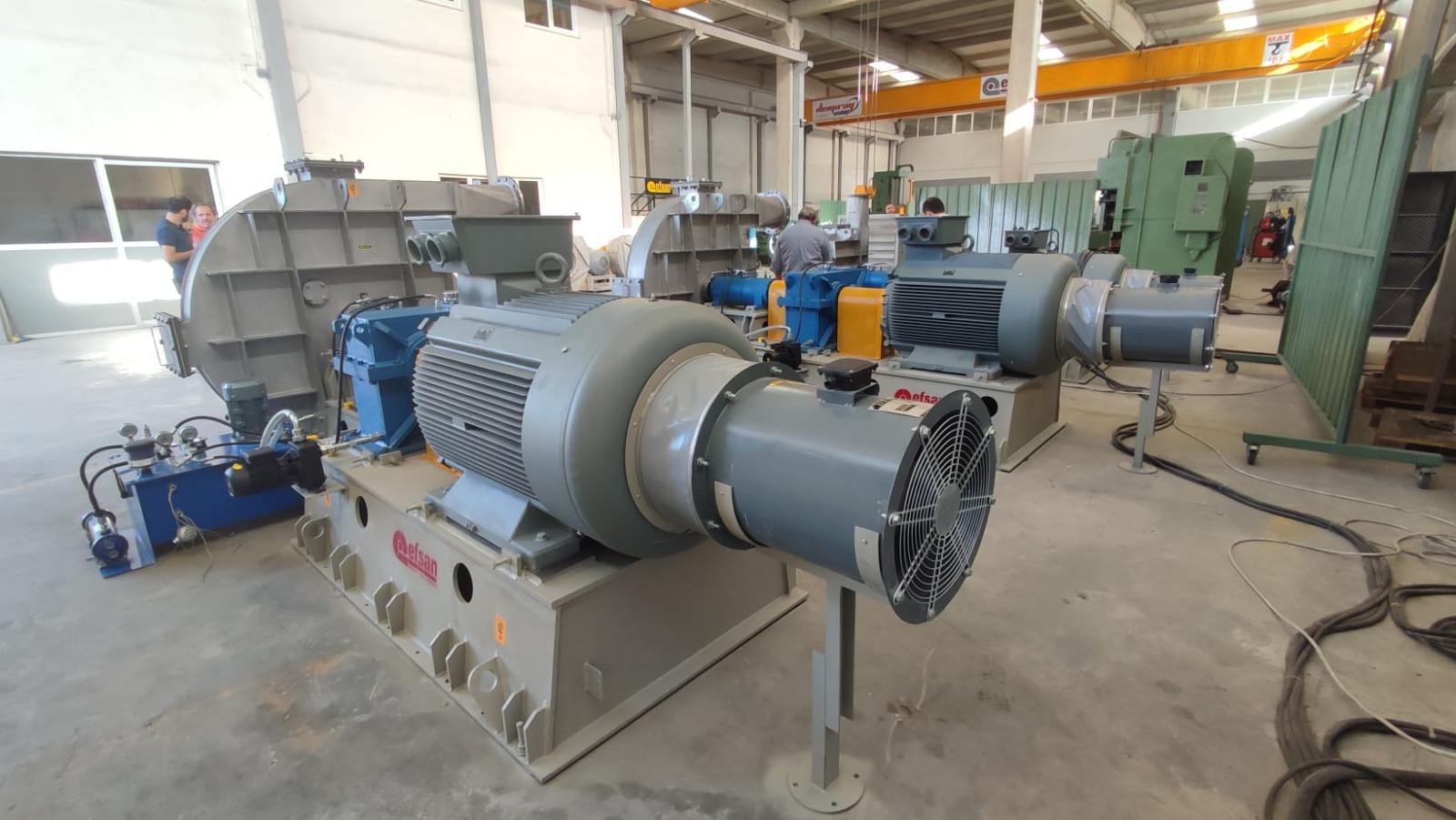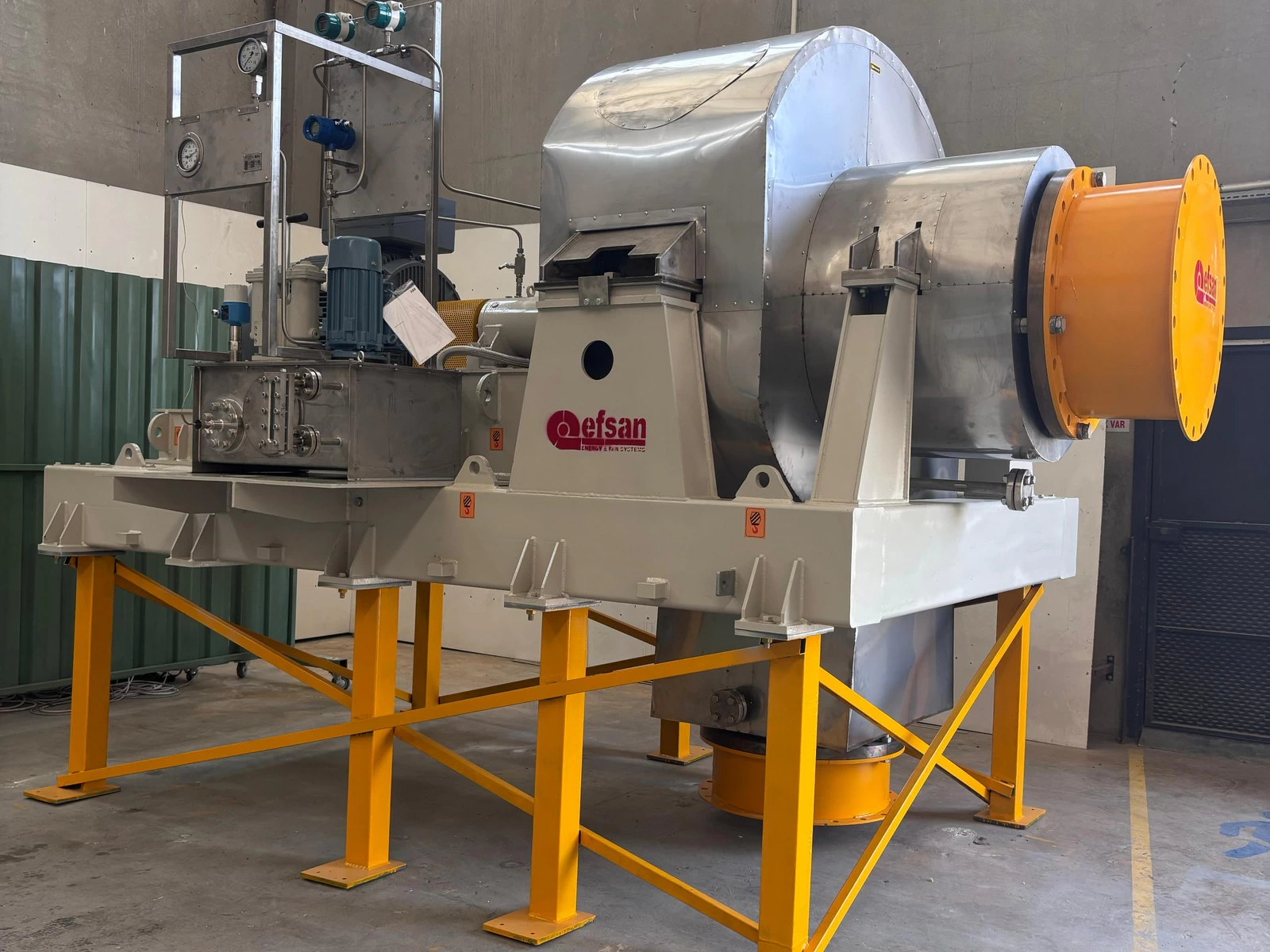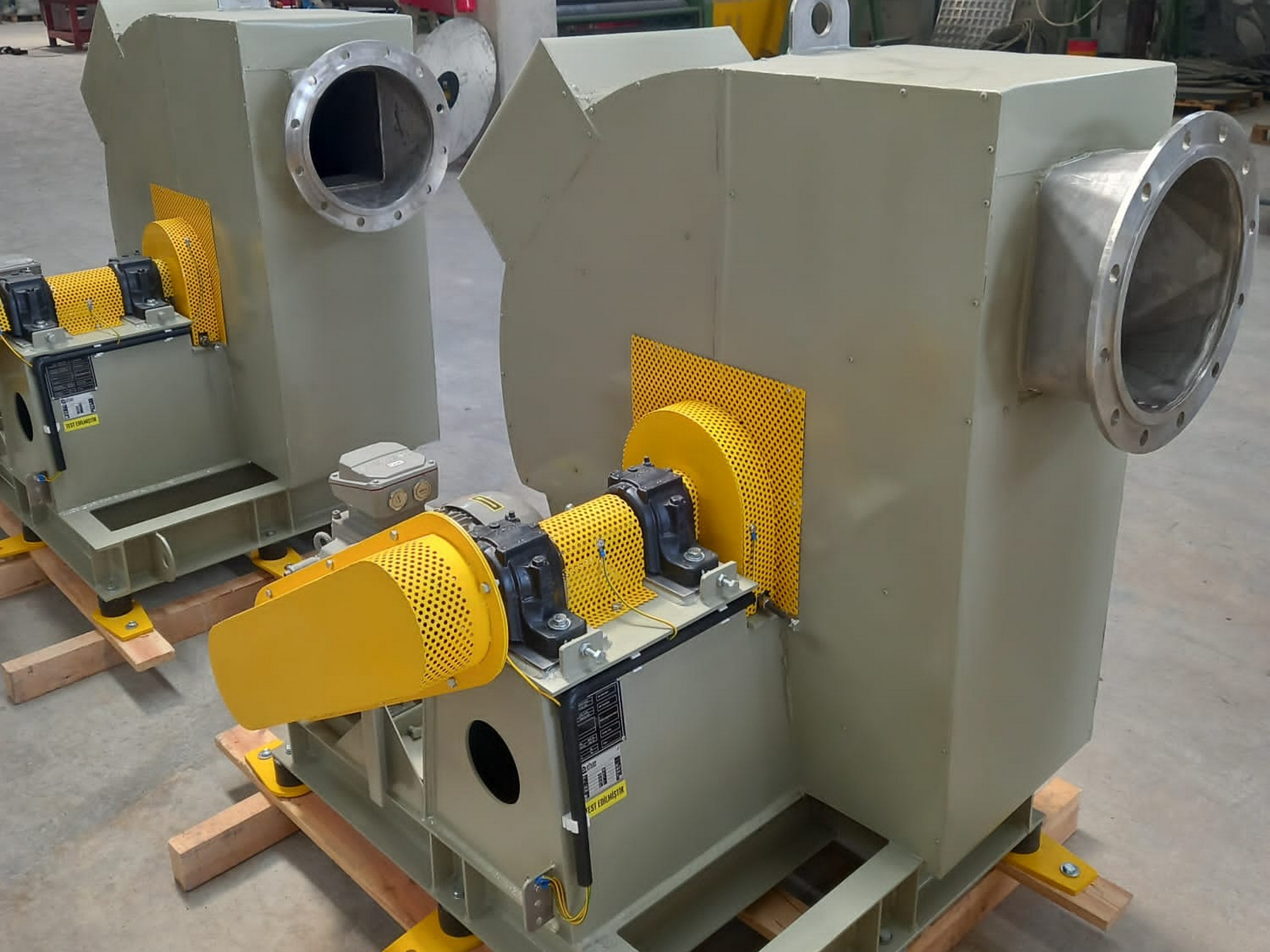Table of Contents
- What is a MVR Blower? Working Principle, Application Areas and Energy Saving Guide
- What is MVR Blower? Short Definition
- MVR blower Working Principle
- Industries where MVR Fans Blowers are used
- Energy Savings: The Efficiency Advantage of MVR Blower Fans
- Considerations in MVR Fan Selection
- Why MVR Fans are the Key to Sustainable Production
- Frequently Asked Questions (FAQ)
- Conclusion and Expert Commentary
What is a MVR Blower? Working Principle, Application Areas and Energy Saving Guide
Increasing energy efficiency and reducing process costs in industrial facilities is becoming more and more important every day. Replacing traditional methods, especially in production processes using steam MVR blower systems (Mechanical Vapor Recompression) provides both environmental sustainability and significant energy savings by reusing low-energy vapor. So, what is an MVR blower, how does it work and in which sectors is it used? In this guide, we will discuss the technical details, application areas and advantages of MVR blowers from an engineering perspective. We will also discuss the selection criteria and maintenance advantages of these energy-efficient systems.

You may be interested in this article. How to Manufacture Industrial Blowers Focused on Efficiency and Durability?
What is MVR Blower? Short Definition
MVR blower, or Mechanical Vapor Recompression blower in English, is a high performance blower used in industrial evaporation processes. Its main task is to mechanically compress the low-energy vapor generated during the process to increase its temperature and pressure and to return this vapor back to the system as a heat source.
MVR blowers operate with much lower energy consumption compared to conventional evaporation systems. The vapor used in these systems is recycled without the need for an external heating source. This reduces both energy costs and environmental impact.
Thanks to their compact design, compatibility with advanced automation systems and high recovery rates, MVR blowers have become strategic equipment, especially for plants aiming for sustainable production.
What is Mechanical Vapor Recompression?
Mechanical Vapor Recompression (MVR) is an advanced thermodynamic technology that works on the principle of converting waste steam generated in a process into an energy source. In this method, low-pressure and low-temperature steam is mechanically compressed by means of an MVR fan or blower, thereby increasing the enthalpy (the energy carried) of the steam. This compressed steam can be reused as a heat source in evaporation systems.
The main objective of MVR systems is to minimize the need for outsourced steam generation, hence:
- Reducing energy costs,
- Limit the use of fossil fuels,
- Reducing carbon emissions.
With these systems, almost all of the steam in a production plant can be used in a closed cycle. This has dramatic results, increasing energy efficiency by up to 90%, especially in processes with continuous steam requirements.
MVR systems also offer more compact, quieter and lower operating cost alternatives to conventional thermal vaporizers.
MVR blower Working Principle
The operating principle of MVR blowers is based on the compression and reuse of low-energy steam in a simple cycle. The main purpose of this system is to recycle the low-energy steam back into the process instead of wasting it.
Vapor Cycle and Energy Recovery
- Steam production: Steam is generated in the evaporator during an industrial process.
- Low energy vapor: This vapor becomes low temperature and low pressure after taking heat from the environment.
- MVR blower is activated: This low energy vapor is absorbed by the MVR blower and mechanically compressed.
- Pressure and temperature increase: The compression process increases the temperature and pressure of the vapor. This vapor now carries heat energy that can be reused.
- Re-use: The compressed steam is sent back to the evaporator and used to evaporate the process liquid.
Thanks to this closed cycle, energy is conserved and no additional fuel consumption is required for new steam generation.
MVR Blower Internal Structure: Rotor, Bearing and Balancing
An MVR blower consists of parts specifically designed to withstand high temperature and high speed conditions:
- Rotor (Impeller): It has a structure with high speed, balanced and special angled blades. It increases the kinetic energy of the steam.
- Bearing System: Generally, rolling bearing or magnetic bearing systems are used. It reduces vibration and ensures long-lasting operation.
- Body and Diffuser: Made of stainless steel or special alloys. It enables steam to be directed and an efficient flow.
- Vibration Sensors and Automation: In modern MVR fan blower systems, temperature, vibration and speed sensors are used for integrated monitoring and control with SCADA/DCS systems.
Thanks to these structures, MVR fans blowers are suitable for long-term uninterrupted operation, while their maintenance intervals are also very long.

Industries where MVR Fans Blowers are used
MVR fan blower systems are widely used in many industries thanks to the great advantages they offer in terms of energy recovery and process optimization. Especially in production lines that require continuous steam, MVR technology both increases efficiency and reduces operating costs. Here are the main industries where MVR fans blower stand out:
Food and Beverage Industry
- Production of dairy products (whey concentrate, milk powder production),
- Concentration of juice and fruit puree,
- Sugar beet and starch-based sugar production.
In the food industry, MVR systems protect product quality while significantly reducing the amount of energy used in production processes. In addition, stainless steel fan housings with hygienic design fully comply with food safety standards.
Chemical and Pharmaceutical Manufacturing
- Solvent recovery,
- Acid concentration,
- Evaporation of pharmaceutical liquids.
In these industries, MVR fans blowers with stable and controlled vapor recovery play an important role, as products need to be processed within precise temperature ranges.
Paper and Pulp Industry
- Evaporation of waste liquids during paper production,
- Cellulose concentration.
MVR systems provide energy efficiency in steam drying processes, increasing production capacity and reducing the carbon footprint of the plant.
Waste Water and Organic Waste Management
- Industrial waste water evaporation plants,
- Fermentation liquid treatment in biogas plants,
- Recovery of animal by-products.
MVR blowers fans used in these areas offer environmentally friendly and economical solutions while separating water through evaporation. It also controls bad odor and gas emission.
Energy Savings: The Efficiency Advantage of MVR Blower Fans
The most important reason for choosing MVR blower fan systems is the energy savings of up to 80% to 90% compared to conventional evaporation systems. This superior performance significantly shortens the return on investment, especially in high energy consuming industries. Below we discuss the main factors that influence this efficiency, together with technical details.
COP Value and Energy Gain
COP (Coefficient of Performance) is an important indicator that defines the energy efficiency of a system. In MVR fan systems COP values can often be above 20. This means that for every 1 unit of electrical energy consumed, 20 units of heat energy are recovered.
Example: While an average of 700-800 kWh of energy is required to produce 1 ton of steam in a conventional system, this value can be reduced to only 80-120 kWh in MVR systems.
Vapor Recovery Rates
MVR blower fan systems, by operating the vapor in a closed loop:
- Recovers vapor from the process,
- Mechanical compaction makes it reusable.
In this way, the system does not need to be constantly supplied with new steam from outside. In some systems, the vapor recovery rate can reach up to 95%.
Carbon Footprint Reduction Impact
Energy efficiency directly affects not only costs but also environmental impact. Thanks to MVR fans:
- Less fuel consumption,
- Therefore, less CO₂ is emitted,
- Contributes to the carbon neutral production targets of industrial facilities.
For example, a plant that consumes 1000 tons of steam per year can reduce CO₂ emissions between 100-300 tons per year by switching to an MVR system.

Considerations in MVR Fan Selection
Every industrial process has different requirements. Choosing the right MVR fan is therefore crucial, not only for energy savings, but also for process safety, ease of maintenance and long-lasting performance. Here are the key technical criteria to consider when choosing an MVR fan:
Capacity and Pressure Range
- The air flow rate (m³/h) and pressure increase (mbar) that the fan can provide must be suitable for the amount of steam in the process and the evaporation rate.
- A typical MVR fan can deliver an air flow rate of 2,000 to 360,000 m³/h and a pressure rise of 20 to 200 mbar.
- Over- or under-selection of capacity directly affects system efficiency and energy consumption.
Tip: Fan curves and performance tables should be examined according to the system design.
Material Quality and ATEX Compliance
- MVR fans are usually manufactured from stainless steel (AISI 304/316) or special corrosion resistant alloys.
- For processes operating in acidic environments, special solutions such as PTFE coating or titanium can be preferred.
- If used for explosive atmospheres, the fan must comply with ATEX directives.
Automation and Control Systems
- Modern MVR fans are equipped with sensors that measure critical parameters such as temperature, pressure, vibration and speed.
- These sensors enable integrated monitoring and remote intervention in SCADA/DCS systems.
- The fan itself may also have automatic balancing, lubrication and diagnostic systems.
Why MVR Fans are the Key to Sustainable Production
Today, we are in an era where industrial facilities are evaluated not only by their production capacity, but also by their environmental impact and sustainability policies. Reducing carbon footprint, reducing energy consumption and using natural resources efficiently is no longer a competitive advantage, but a necessity. At this point, MVR fan technology is one of the most effective solutions to achieve sustainable production goals.
Low Consumption with Energy Recovery
MVR fans compress the low-energy vapor generated in processes and make it reusable. This way:
- Fossil fuel consumption to produce new steam is reduced,
- Energy needs drop significantly,
- Greenhouse gas emissions are minimized.
Especially in energy-intensive sectors, these savings translate into tons of CO₂ reduction in annual carbon emissions.
Cleaner, More Efficient Industry
- MVR systems are quieter, more compact and safer than conventional steam boilers.
- Complies with environmental regulation requirements in the food, chemical, pharmaceutical, biogas and wastewater sectors.
- These structures, where waste is minimized and energy is recovered, enable facilities to successfully pass environmental audits.
Stand Out in Sustainability Reports
businesses thanks to MVR fans:
- It can increase energy efficiency scores,
- Complies with environmental management systems such as ISO 50001, ISO 14001,
- Present concrete energy saving data in annual sustainability reports.
In conclusion; MVR fan technology is not only an equipment, but also the key to businesses investing in the future. By combining energy efficiency, low emissions and resource savings in the same pot, it guides industry towards a more livable world.
Frequently Asked Questions (FAQ)
What is an MVR fan and what does it do?
Answer:
The MVR fan is the core part of the “Mechanical Vapor Recompression” system. It mechanically compresses low energy vapor, increasing its temperature and pressure. This vapor is then reused in the process, thus saving energy and reducing the need for external steam.
What is the difference between an MVR fan and a conventional vaporizer?
Answer:
While conventional vaporizers require new steam from outside for each process cycle, MVR fan systems recover and reuse the existing steam. This reduces energy consumption by up to 80% and reduces operating costs.
In which temperature and pressure ranges do MVR fan systems operate?
Answer:
MVR fans are generally designed to operate in a temperature range of 50-120 °C and a pressure difference of 20-200 mbar. These values may vary depending on the process and the fan model used.
How much energy can be saved by using MVR fans?
Answer:
In a properly designed MVR system, energy savings can range from 60% to 90%. This depends on the capacity of the system, process temperatures and vapor recovery efficiency.
Are MVR fan systems difficult to maintain?
Answer:
No, modern MVR fan systems are easy to maintain as they are equipped with features such as automatic lubrication, balance control and remote monitoring. When operated under favorable conditions, they have a low risk of failure and provide a long service life.
Conclusion and Expert Commentary
Improving energy efficiency in industrial production has become an integral part of both environmental responsibility and competitive advantage. In this context MVR blower systemsnot only optimizes evaporation processes, but also enables businesses to achieve long-term sustainability goals by reducing energy costs.
MVR technology is a solution that operates with much lower energy than conventional steam systems, requires less maintenance, has a short return on investment and significantly reduces carbon emissions. This technology, which has proven itself in dozens of sectors such as food, pharmaceuticals, chemicals, paper and waste water, sets the production standards of the future as well as today.
With 30 years of experience in industrial fan systems, I can easily say the following:
A properly designed and selected process-compatible MVR fan system is not only an energy-saving tool, but also a strategic power source for your production line.
If you would like to get more information about MVR fan, make the right product choice or request engineering support specific to your project, you can contact us.
tags :
More about the sector and our business




